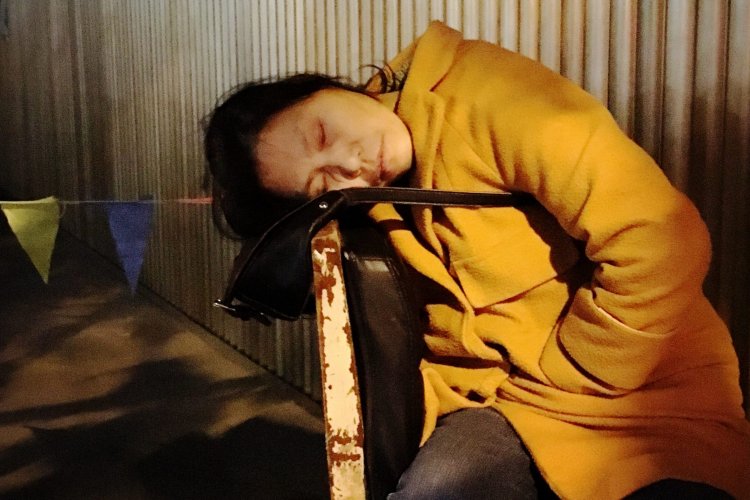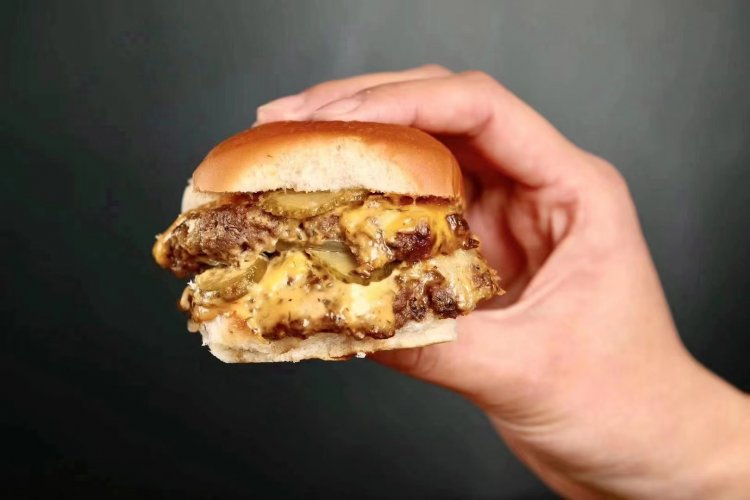Sam of Sammies: Entrepreneur & Where East Eats West author Sam Goodman
Longtime Beijing resident Sam Goodman migrated here from Canada in 1995 to study Chinese, opened the highly successful sandwich chain Sammie’s in 1997 and wrote Where East Eats West: The Street-Smarts Guide to Business in China in 2008. Since then, his “anti-textbook,” as he calls it, has been incorporated in course curriculums at several universities, including Boston College, Rutgers and Colorado State University. These days, he devotes his time to rock climbing, his clean energy business and being a dad.
What brought you to China, and why did you choose to settle in Beijing?
I’ve always been interested in Asian culture – I grew up watching Bruce Lee Black Belt Theater. At university, I studied Oriental philosophy and knew I wanted to be in the East. I lived in Hong Kong and Korea for a couple years until a friend told me: “If you have nothing better to do, go study Chinese – it’s the future and you’ll have a blast.” He had connections at a language institute [now known as BLCU], which is why I settled on Beijing. The original plan was to become a professor of comparative anthologies – I was going to study Chinese here for two years, work for a couple more to strengthen my Chinese, and eventually go to America and get my Ph.D.
Obviously that didn’t happen. I kept complaining about not having a place to hang out at for my first few years here, and my friend said, “Why don’t you shut up and do something about it?”
So I did, and I’ve been here ever since.
What inspired the title for your book Where East Eats West?
The hidden reason is that it was the slogan for Sammie’s. But I also just wanted to convey that China is not out to cheat foreigners; foreigners just happen to get tripped up all the time because they come here uninformed about how business is done differently.
How did you decide to write this book?
When I was running Sammie’s, I went through my fair share of “China challenges.” I started calling up CEOs for business advice – they were happy to let me pick their brains over lunch. I always found it fascinating that these huge corporations were experiencing the same business problems that I was. It was encouraging to see that what I was learning while making sandwiches was actually applicable on a much larger scale.
I would talk about what I’d found out with friends, who told me, “You have to write this down.” That’s when I started thinking about putting this stuff together. I knew there were plenty of books out there on doing business in China, but I wanted this one to be fun and educational. I specifically didn’t make it a story because if people were reading it that way, they might not be able to pick up on all the business tips. I tried to do it from the little guy’s perspective – after all, not everyone has a huge corporation or millions of dollars behind them. I started out Sammie’s with USD 25,000 – which, by the way, was not enough. I wrote Where East Eats West because I wanted to provide a different kind of business manual on China, and finally put an end to those mistakes that keep happening.
If you could only give aspiring entrepreneurs in Beijing one piece of advice, what would it be?
My best advice is to ask lots of questions and talk to people who have already accomplished a lot before. There’s no reason to make the same rookie mistakes that others have done before you – you ought to dive right into the “advanced” China mistakes.
What’s really bad is when you have an inexperienced entrepreneur coming to China to try to do business for the first time. Experienced businesspeople are going to anticipate a lot of the problems before coming to China. You’ve got to separate the rookie mistakes from the China rookie mistakes; otherwise, it’ll all be blamed on China – and that’s just not fair. If you don’t do your homework, and continue to play by the wrong rules, you’ll naturally get hurt.
What are some of the biggest mistakes that entrepreneurs new to Beijing make?
Face and guanxi are the most obvious concepts. One of the biggest mistakes is over-mystifying the concept of guanxi – it’s not that big of a deal. On the other hand, another way to mess up is underestimating how important it is. My book describes both in detail.
You used to own the sandwich chain shop Sammie’s – what happened to it and what did you learn from the experience?
Whew, this is a long story. Sammie’s had four locations when we got slammed by SARS. When I first started out the business, there was nothing like it, but four or five years later, I felt like the world no longer needed another cafe. The idea was to really phase myself out of the business and start focusing on other things. We had everything lined up, including an investor and an operation manager – and March 2003 was our best month ever. Then SARS hit us in April, and we went down 80% in sales, just like that. After a couple of months, all of our cash reserves were gone. Slowly, our sales started to creep back up again, but by then I knew I was done with Sammie’s. So when one of the investors wanted to take it over, I told them to go ahead. Unfortunately, they made a series of mistakes – which I outline on my blog – and then, months later, Sammie’s was gone.
You work in clean energy now – what do you do and what drew you to this field?
There’s no bigger challenge than cleaning up the world. There are a lot of effort and resources going towards transitioning to a low-carbon society right now, but the problem is that it’s such a new idea that there’s an incredible – and unfortunate – duplication of efforts. So you have a lot of people saying, “Yes, let’s save the planet and do good things!” but end up doing what 80% of other people have already done. So what I’m working on right now is a project called Green Gator: I’m aggregating the world’s top green resources to make it easier for people to understand what others are doing and work together. Our goal is to aggregate and qualify – so we’ll have a searching format similar to Google’s, but we’ll qualify not by a pool of experts but by user actions.
Living in Beijing for these past few years has definitely made me more aware of environmental issues. I have six years of data because I used to track the air quality pollution. It has made me more passionate about environmental issues than ever.
Read Sam Goodman’s blog at www.where-east-eats-west.com
Where East Eats West available for purchase on Amazon.






